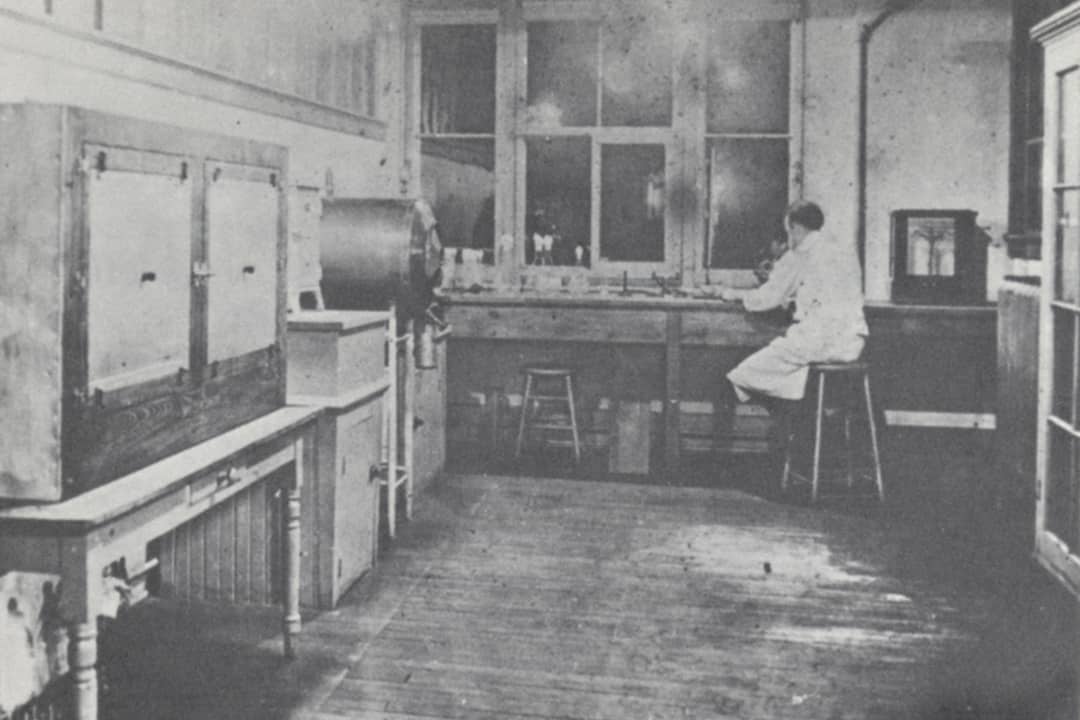The 1918 influenza pandemic, which lasted from 1918–1920, is estimated to have claimed 50–100 million lives worldwide. In Canada, the pandemic killed around 55,000 people. This flu had a high mortality rate for university-aged people, among other demographics.
By late October 1918, the second wave of the flu was at its peak. Newspapers across Canada plastered headlines like The Toronto World’s “ ‘Flu’ Has Claimed Thousand Victims” on its pages.
In another one of The Toronto World’s articles, a plea was printed for people to start wearing masks. “Why wait until all the Toronto citizens have influenza… or are dead, before starting the mask campaign?”
Indeed, the Toronto local government took many measures: it closed theatres, cinemas, bowling alleys, and pool rooms, and Charles Hastings, then the medical officer of health for Toronto, made “Emergency Appeals” for additional aid for flu victims in the papers.
The pandemic slowed the coal industry — a frightful prospect with winter looming and coal being one of the primary means of heating one’s home. In addition, hospitals were at full capacity. Nurses and doctors were overworked and also falling ill.
In light of the pandemic, U of T closed its doors on October 18, 1918 and stayed closed until November 5.
“The entire life of the University is naturally disrupted”
On October 9, The Varsity reported that nearly one third of the men living at Burwash Hall had “contracted the disease with varying severity.” By October 18, St. Michael’s College reported more than 60 cases.
The Varsity wrote that the Women’s Literary Society of Victoria College, despite a “long casualty list occasioned by the ‘flu,’ ” held its opening meeting on October 10.
On October 16, The Varsity reported that a hazing ritual of sorts for first-years was held at University College, but “due to… the prevalence of the ‘flu’ they were let off without a ducking [into the pool].”
Like elsewhere in society, the flu had muted usual campus activities. Some events were cancelled or rescheduled even before the school closed.
Alongside the announcement in The Varsity that the university would close, there was a call for medical and nursing students to help combat the outbreak.
There was also an article on the symptoms, prevention, treatments, and precautions: “The sick should be separated from the healthy… Wash the hands frequently… Those attacked should not, on any account, mingle with other people for a period of at least ten days.” This seems familiar.
The dean of the Faculty of Medicine at the time would later report that “many of the students put themselves at the service of the communities sorely in need of them, and thus did humanitarian work, while acquiring useful clinical experience.”
When the school reopened, perhaps ill-advisedly, The Varsity put out calls for staff because of further enlistment during World War I and because “a considerable proportion” of its current staff was “absent from College from causes of sickness.” The call did not specify which illness, but it is safe to assume that it was influenza.
A Halloween party at Annesley Hall was held in spite of the pandemic. Only 15 women were left at the residence, including two who were still ill. Also in attendance at this party were little “flu bugs.” Except, these were cut from brown paper and had “fortunately lost their power for one night at least.”
The war ended, but the flu continued
Following the armistice on November 11, 1918, questions swirled about how former soldiers, who were students once more, would be integrated back into school at U of T.
Residences and dining halls that had been occupied by the Royal Air Force were slowly given back for student use. Reports of casualties still trickled in.
The “Varsity’s Roll of Honour” was a regular update of U of T alumni who were in military service. In November, The Varsity included an entry on Captain Charles Sparling, who succumbed to influenza. In December, it reported two more men as flu deaths.
It seemed a rather macabre posting but was nonetheless informative on how the war and pandemic were intertwined. Wartime injuries were coupled with the disease. Even in postings that were primarily about the flu, articles noted when the afflicted were military personnel.
Separating the two events was impossible in the public mind. Even today, when we think of the year 1918, these two events inevitably creep up.
Making a vaccine
The Connaught Antitoxin Laboratory at U of T was established in 1914 in order to create a diphtheria antitoxin. Through the war years, the lab worked to provide tetanus and smallpox antitoxins.
The lab developed a vaccine for the flu during the pandemic. It was developed in “very large quantities” and was offered across the country for free. It was even sent to some US states and to the United Kingdom.
It was, however, “emphasized that vaccination against influenza… was an experiment” but that participation was needed to “determine the possible value of such a vaccine.”
To create the vaccine, the team at Connaught worked “day and night” for two months. The flu continued into 1920, so the vaccine was perhaps not as efficacious as hoped. But it represented a concerted effort to mitigate the flu not just in Canada, but also in other parts of the world.
The silver lining?
The 1918 influenza pandemic and the response to it have some characteristics in common with COVID-19: the precautions, health care personnel fatigue and illness, disruptions to ‘normal life,’ and urge to create a vaccine. The feeling that there was no end in sight was likely felt then as it is now.
We can learn a lot from 1918. Most importantly, COVID-19 will eventually end.
And you should wear a mask.


